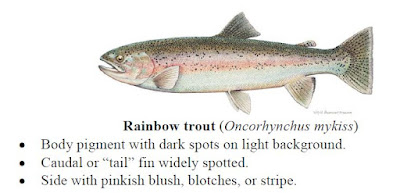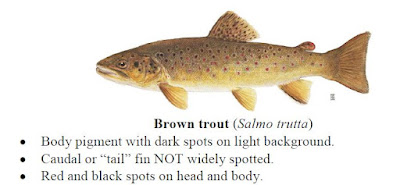I did a survey for NJFW at a local lake on the opening day of trout season. I was recording how many people were fishing and what they caught (if anything). But a good number of people fishing looked a bit panicked when I came up to them. Some immediately showed me their fishing license and trout stamp, but a good number were fearful because they didn't have that license. Enforcement was not my goal or in my purview but I did remind everyone to "Display your license - it’s the law!"
Hunting and fishing licenses must be visibly displayed in a holder in a conspicuous place on your outer clothing when hunting, fishing or trapping, and you must carry a printed copy of permits with you while in the field. Using a digital display on a smartphone is not an acceptable way to exhibit your license in New Jersey. You can purchase your license online at https://dep.nj.gov/njfw/licenses-and-permits/
Now, on to the topic of trout.
The outbreak of Furunculosis led to modifications in the 2014 trout stocking program to ensure the conservation of the state's trout fishery. Rainbow trout are the only species stocked since 2013. That doesn't mean you won't find some brown or brook trout in some locations that have survived and bred on their own, but in many stocked waters it is only rainbows. Many people asked me about brown and brook trout.
New Jersey has two Trophy Trout Lakes. Round Valley and Merrill Creek Reservoirs both support big rainbow trout, brown trout, and lake trout.





No comments:
Post a Comment